Optimizing content layout is not merely about aesthetics; it’s a strategic process that directly influences how users perceive, comprehend, and interact with your content. While Tier 2 provides a solid foundation on layout elements and visual hierarchy, this deep dive aims to equip you with granular, actionable techniques rooted in expert knowledge, data-driven insights, and real-world applications. We will explore how precise adjustments—down to CSS and HTML best practices—can dramatically improve readability and engagement, ensuring your content not only attracts attention but sustains it effectively.
- 1. Understanding the Impact of Content Layout on Readability and Engagement
- 2. Applying Precise Visual Hierarchy Techniques for Better Content Comprehension
- 3. Strategic Placement and Formatting of Key Content Elements
- 4. Enhancing Readability Through Technical Layout Adjustments
- 5. Reducing Cognitive Load with Effective Content Grouping and Navigation
- 6. Practical Techniques for Testing and Refining Layout Decisions
- 7. Common Layout Mistakes to Avoid and How to Correct Them
- 8. Final Integration: Ensuring Long-term Effectiveness of Layout Optimization
1. Understanding the Impact of Content Layout on Readability and Engagement
A precise content layout can significantly influence user attention, retention, and conversion rates. For example, adjusting element placement or spacing can guide the eye naturally toward critical information or calls-to-action (CTAs). Research from eye-tracking studies shows that readers tend to scan content in an F-shaped pattern, with attention concentrated on the top and left areas of the page. By leveraging this insight, you can position key elements strategically to capture attention efficiently.
a) How specific layout elements influence user attention and retention
Elements such as whitespace, font size, color contrast, and visual anchors (like icons or images) act as cues that direct user focus. For example, increasing whitespace around a CTA isolates it visually, making it stand out. Similarly, employing bold typography for headings or using a contrasting background color for important snippets helps retain user attention on vital content.
b) Analyzing case studies demonstrating layout-driven engagement improvements
In a case study involving an e-commerce landing page, repositioning the primary CTA above the fold and increasing its size by 30% led to a 25% increase in click-through rates. Another example involved restructuring a long-form article with clearer section breaks and visual cues, reducing bounce rate by 15%. These examples illustrate how targeted layout changes, backed by data, can produce measurable engagement lifts.
c) Quantitative metrics to measure readability and engagement shifts after layout changes
- Time-on-page: Increased average duration indicates improved engagement.
- Scroll depth: Deeper scrolls suggest content is compelling and well-structured.
- Click-through rate (CTR): Higher CTR on CTAs signals effective placement and visual emphasis.
- Bounce rate: Decreases reflect better user retention facilitated by layout improvements.
2. Applying Precise Visual Hierarchy Techniques for Better Content Comprehension
Creating a clear visual hierarchy ensures that users can quickly scan and understand your content. Tier 2 emphasizes font size, weight, and color differentiation, but to truly master it, you must implement these with precision and consistency. Additionally, effective spacing and indentation guide the eye naturally through sections, while visual cues distinguish between different content levels. Let’s explore how to execute these techniques systematically.
a) Using typographic hierarchy: font size, weight, and color differentiation
Establish a typographic scale based on modular ratios (e.g., Major Third or Perfect Fourth) to ensure proportionality across headings, subheadings, and body text. For example, set main headings at 2em, subheadings at 1.5em, and body at 1em. Use font weights strategically: bold for headings, semi-bold for subheadings, and regular for body. Color differentiation should be subtle but consistent; for instance, using a darker hue for primary headings and a softer tone for secondary ones.
| Hierarchy Level | Font Size | Font Weight | Color |
|---|---|---|---|
| Heading 1 | 2.5em | Bold (700) | #2c3e50 |
| Heading 2 | 2em | Bold (700) | #34495e |
| Subheading | 1.5em | Semi-bold (600) | #7f8c8d |
| Body Text | 1em | Normal (400) | #2c3e50 |
b) Implementing effective spacing and indentation strategies
Consistent spacing enhances readability by providing breathing room around content blocks. Use a modular scale for spacing, such as 8px, 16px, 24px, and 32px, to create a harmonious rhythm. For instance, apply 16px padding/margin between headings and paragraphs, and increase indentation for blockquotes or code snippets to visually separate them. Avoid cramming content; each element should have enough space to stand out without overwhelming the reader.
Expert Tip: Use CSS variables for spacing to maintain consistency and facilitate easy updates across your stylesheet, e.g., –spacing-small: 8px; –spacing-medium: 16px; –spacing-large: 24px;.
3. Strategic Placement and Formatting of Key Content Elements
a) How to position calls-to-action (CTAs) for maximum visibility and interaction
Position primary CTAs above the fold, aligned with the user’s scanning pattern—typically on the right side or centered in the visual hierarchy. Use contrasting colors that complement your brand palette but stand out against surrounding content. Incorporate whitespace around CTAs to isolate them, and utilize clear, action-oriented copy. For multi-step conversions, consider sticky or floating CTAs that remain accessible as users scroll.
b) Highlighting important information using contrast, background shading, and icons
Use high-contrast text (e.g., dark text on a light background) for critical points. Incorporate background shading or colored blocks to draw attention, such as a light yellow background for notes. Icons can serve as visual anchors, clarifying the nature of the information—use universally recognized symbols like exclamation marks for alerts or checkmarks for completed steps. Keep icon size proportional and use consistent styles to avoid visual clutter.
c) Techniques for balancing text with visual elements like images, infographics, and videos
Employ a grid layout to align visual elements with related text, maintaining visual harmony. Use images with sufficient whitespace around them, and optimize their size for fast loading. Infographics should be simplified, emphasizing key data points with bold colors and minimal text. For videos, embed responsive players that adapt to device width, and place them near relevant textual explanations to enhance comprehension.
d) Practical example: Structuring a product page for optimal user flow
Begin with a captivating hero image and a concise headline at the top. Place the primary CTA button immediately below, styled with contrasting color and ample padding. Follow with product features in bullet points, using icons for quick scanning. Integrate customer reviews with star icons and highlight key benefits using shaded backgrounds. Use a sticky “Add to Cart” button on mobile for easy access during scrolling.
4. Enhancing Readability Through Technical Layout Adjustments
a) Choosing appropriate line length, line spacing, and paragraph spacing
Optimal line length for readability is approximately 50-75 characters per line. Use CSS property max-width set to 600px for desktop and fluid percentages for responsive design. Line spacing (line-height) should be 1.5 to prevent visual crowding. Paragraph spacing can be achieved with margin-bottom set to 16px or more, ensuring clear separation between ideas.
b) Implementing responsive design principles for various devices
Use CSS media queries to adapt layout elements: stack columns vertically on narrow screens, resize images proportionally, and adjust font sizes for readability. Employ flexible units like vw, vh, and rem to ensure scalability.
c) Utilizing CSS and HTML best practices for consistent layout rendering
Use semantic HTML tags (<section>, <article>, <header>, etc.) to improve accessibility and SEO. Define CSS classes with clear naming conventions and avoid inline styles where possible to promote consistency. Leverage CSS Flexbox and Grid for layout structuring, ensuring elements align correctly across browsers.
d) Step-by-step guide: Coding a mobile-friendly article layout with accessibility standards
- Define a
<section>element with a descriptive class, e.g.,.article-layout</

